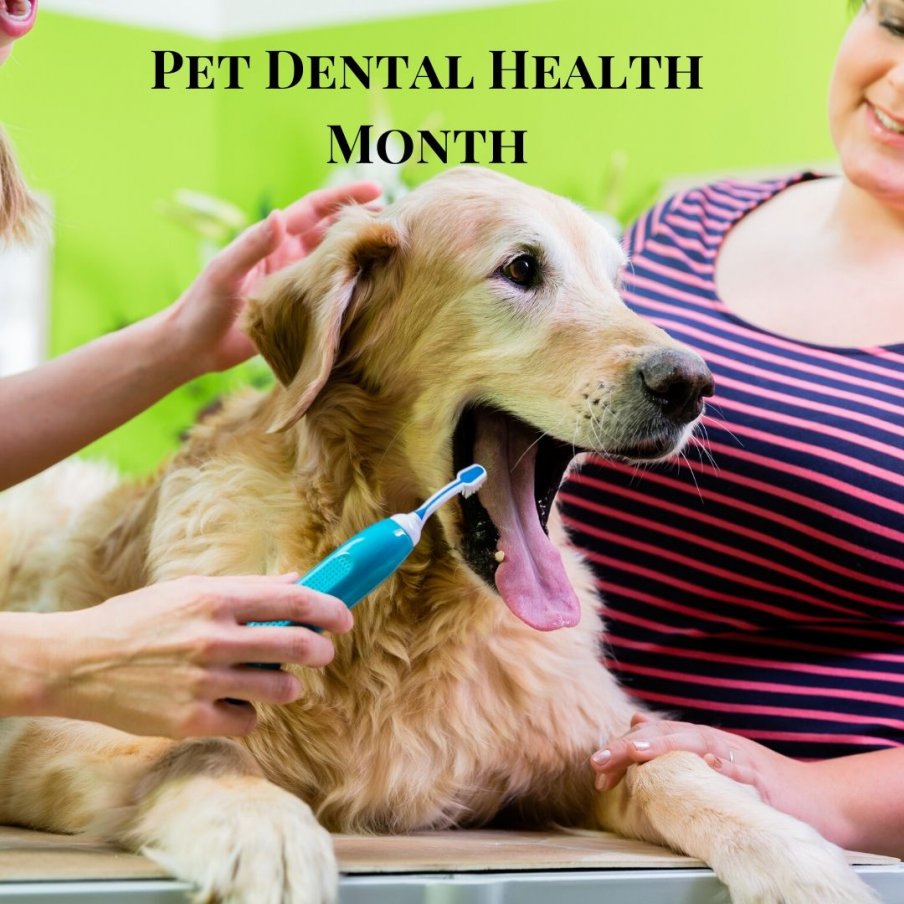When was the last time you looked in your dog’s mouth?
If you’re like other dog owners, the answer is “never” or “infrequently.”
In fact, according to the American Vet Medical Association, 80% of pets have some form of oral disease by their third birthday.
The Academy of Veterinary Dentistry states that “less than 1% of pet owner’s brush their pet’s teeth.”
These statistics are startling considering your dog’s oral health can affect all aspects of his quality of life. With February being Pet Dental Health Month, it’s time to turn our attention to your pet’s oral health.
Beneath a dog’s gum line lies bacteria, which when built up can cause red and puffy gums, leading to a condition called gingivitis. This is the earliest stage of gum disease. If left untreated, this can turn into periodontal disease which will cause a weakening or loss of support structure of the teeth.
In addition to gingivitis & periodontal disease, poor dental hygiene can cause the following problems:
- Loose teeth
- Bad breath
- Excessive drooling
- Irritability
- Weight Loss
- Fractured jaw
- Liver disease
- Kidney disease
- Heart disease
A dog with gingivitis may have bad breath, paw at his face, excessively drool or be unwilling to eat harder foods. If left untreated, gum disease is irreversible!
Preventative Medicine Is the Best
So how do you prevent tooth decay in dogs? There are numerous ways.
- Brush his teeth. Different dogs have different requirements for dental care, so ask your vet how often you should brush your dog’s teeth. The best time to brush your dog’s teeth is when he/she is relaxed and calm. Use a soft toothbrush specially designed for dogs (the bristles are specifically angled) and doggie toothpaste (often comes in flavors like poultry and peanut butter). Want to know how? Never use human toothpaste because it can upset your dog’s stomach. Follow these steps suggested by PetMD.
- Raw, meaty bones. We have all read about the dangers of bones that can break and splinter into small, sharp pieces that can cut your dog’s mouth and digestive organs. Certain raw bones are soft and pliable and the motion of chewing helps to remove the plaque and tartar from your dog’s teeth. These bones contain calcium and other nutrients that help to keep your dog’s teeth healthy. Consult your veterinarian about the best type of raw bones to feed your dog based on its size and diet.
- Dental Chews. Dental chews leverage your dog’s natural instinct to chew. Not all dental chews are alike. Some feature ingredients that clean teeth and freshen breath while others provide vitamins and nutrients to your dog. It’s important to find dental treats that are pliable to avid breaking your dog’s teeth and low in fat so they don’t add unnecessary calories.
- Dog chew toys. Dog chew toys not only keep your dog from being bored, but can improve your dog’s dental health. Some suggestions include Kong® toys,Plaque Attackers® or Gumabones®.
- Carrots – Carrots are a super food that are low in calorie, high in fiber and vitamins, and cleans the surface of your dog’s teeth as he chews on them. However, be sure to cut the carrots into bite-sized pieces before feeding them to your dog, or else they can pose a choking hazard.
If you have a senior dog, it is more important than ever to keep an eye on your dog’s teeth. Don’t just think about your dog’s teeth in February which is Pet Dental Health Month!
When in doubt, your veterinary practice probably offers teeth cleaning, but this can get expensive. Some studies suggest that maintaining oral health can add up to five years to your pet’s life, so oral health should not be neglected.

